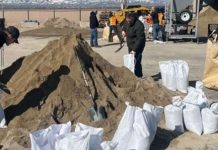SALT LAKE COUNTY, Utah, April 22, 2021 (Gephardt Daily) — In conjunction with celebrating Earth Day, Salt Lake County announced a new water conservation standard in its operations of reducing water use of a minimum of 5% across facilities in response to the State of Utah’s Emergency Drought Declaration in March 2021.
“Water conservation is critical to the well-being of our community as we grow and adapt to the changes our landscape faces,” SLCo Mayor Jenny Wilson said, by way of a news release. “I’m eager for Salt Lake County to commit to this water savings and serve as an example, because when we all do a little, we can save a lot. And we must save.”
Conserving a minimum 5% of water use in Salt Lake County operations this year amounts to saving at least 43.3 million gallons of water, the news release said. This new initiative is in addition to existing efforts in place at the county, from water-efficient design at newer facilities, fiscally responsible and paced upgrades at aging grounds and facilities, and strategic water use at parks and recreation operations.
Salt Lake County, in turn, is challenging its residents to also find little ways they can reduce their water use by 5%. If 25% of residents conserved 5% of their typical water use, Salt Lake County could collectively save 2 million gallons of water every single day — the equivalent of about nine lap swimming pools.
“Most of the Wasatch Front is in an ‘exceptional’ drought, the most severe type of drought,” Robert Thompson, Salt Lake County watershed manager, said. “Our snowpack is well below average, even after precipitation in March and April. Water conservation is paramount in addressing mounting water availability concerns.”
In addition to its water savings goal, Salt Lake County has launched a new webpage, SLCoH2O.org, where residents can find a map that identifies the water district for their address, as well as location-specific incentives, rebates, and education materials from area experts and state partners.







